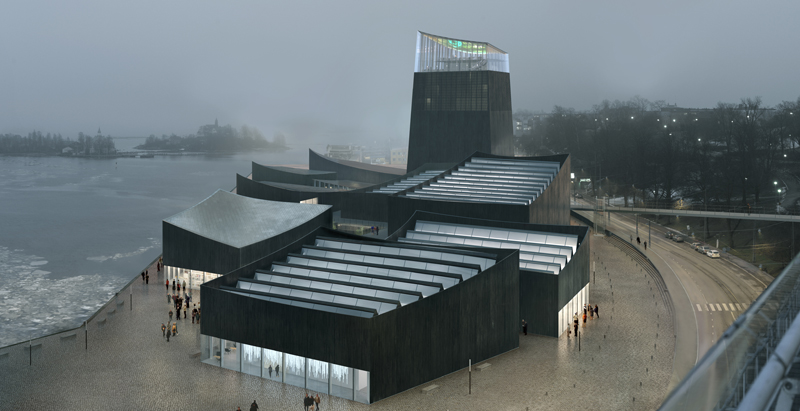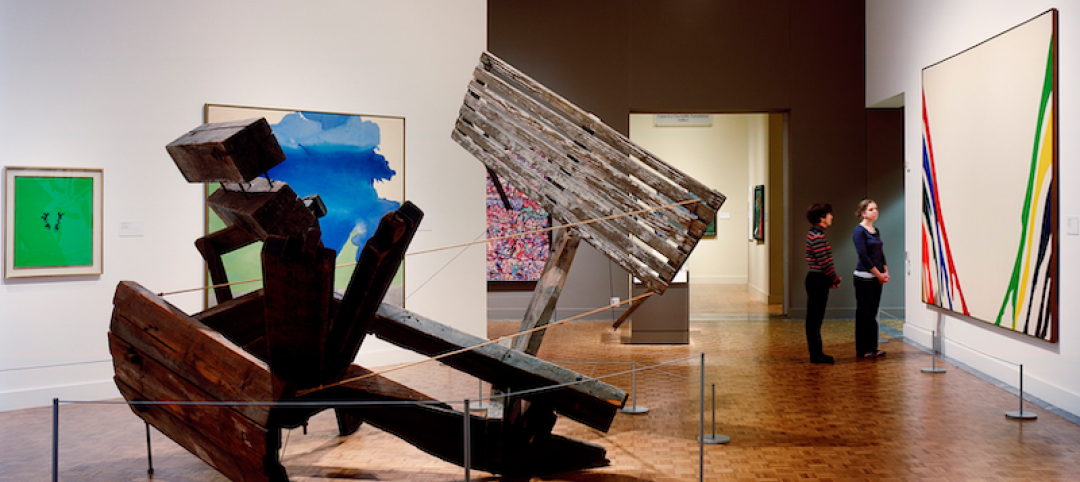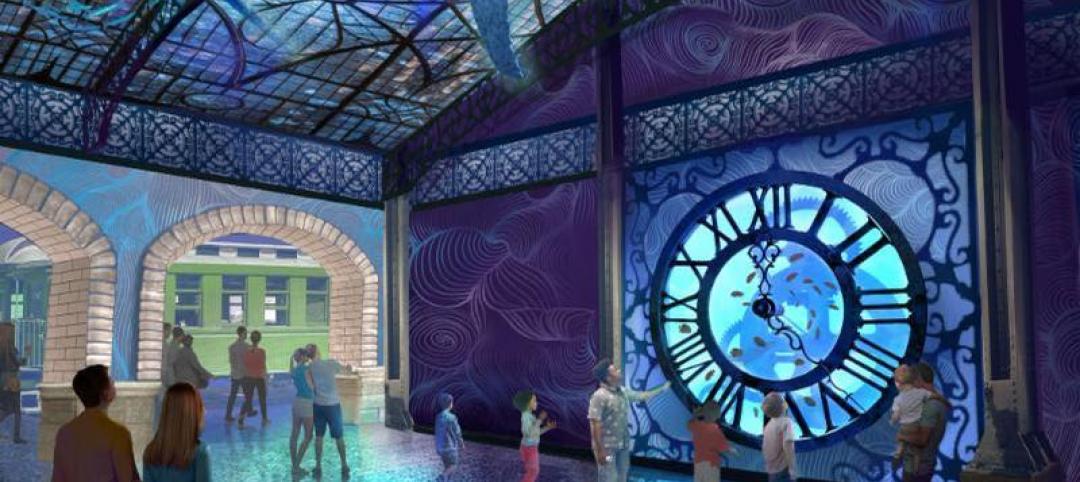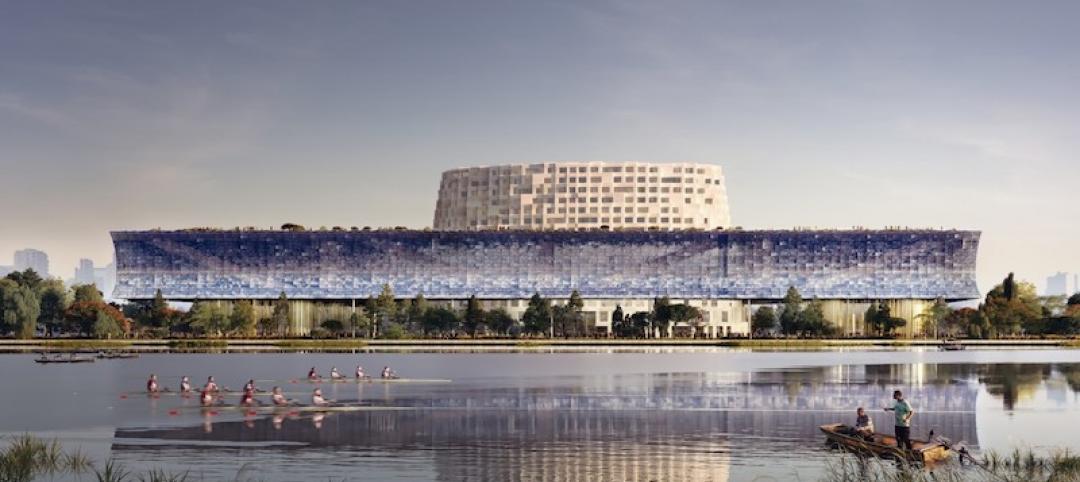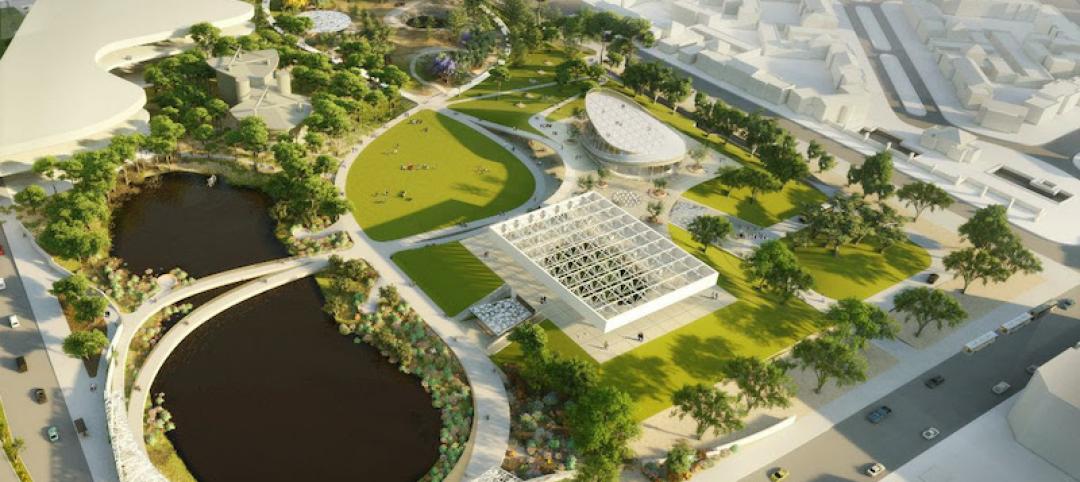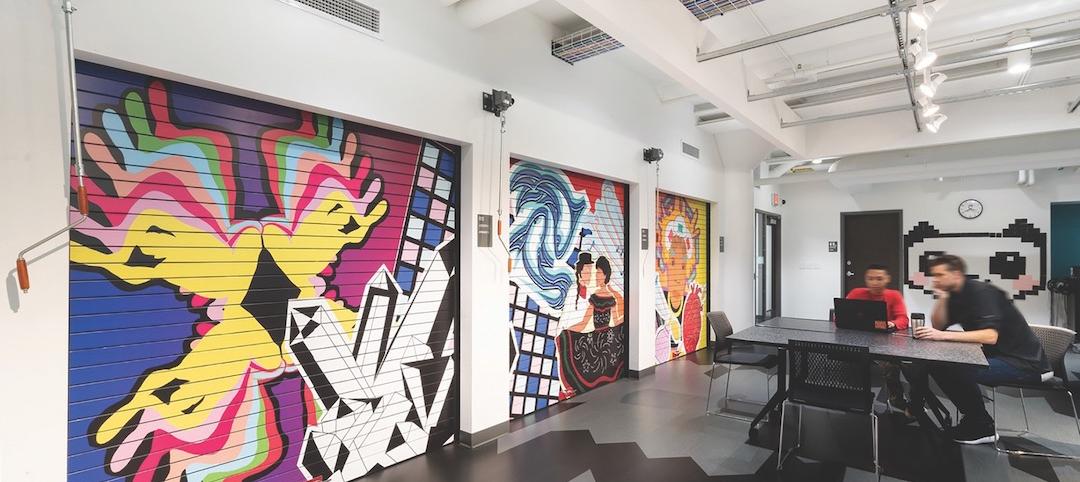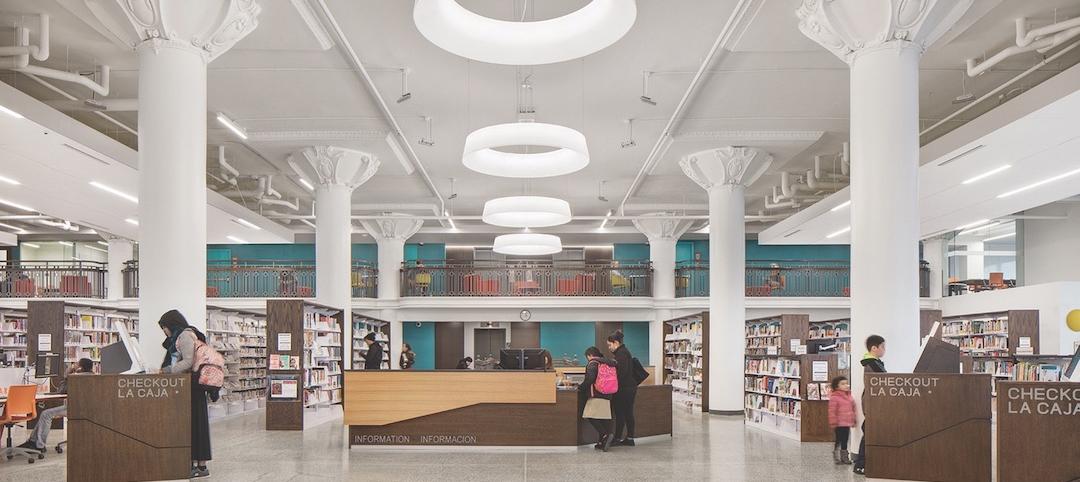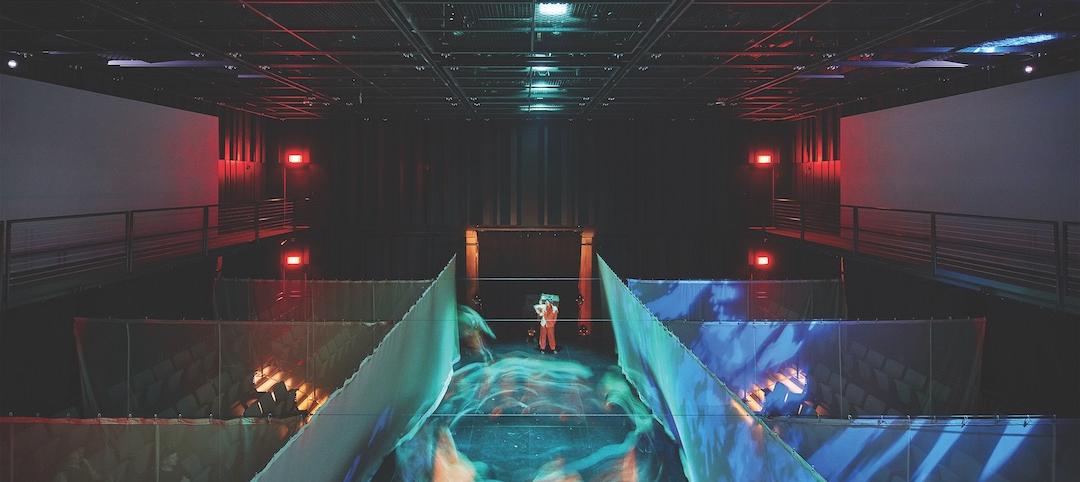The second-stage designs by finalists in the Guggenheim Helsinki design competition have been unveiled, Architectureau reports.
The designs were not released alongside the firm that created them. The renderings below are from the finalists: AGPS Architecture, Asif Khan Ltd., Haas Cook Zemmrich Studio2050, Moreau Kusunoki Architectes, SMAR Architecture Studio, and Fake Industries Architectural Agonism.
The team behind each design will remain anonymous until judging is complete. Designs are currently on exhibit at the Kunsthalle Helsinki. Additionally, exhibition visitors can play a Matchmaker Game, developed by American data scientist and taste researcher Hugo Liu, to pair visitors with one of the six final designs based on an assessment of their personality.
Following the exhibition, the jury will meet in Helsinki to select a winner, which will be announced on June 23, 2015.
Read more at Architectureau, and see all the renderings for each submission at Guggenheim Helsinki.
FINALIST #1

From the architects:
Five timber towers huddle together at the edge of the Baltic Sea, forming a shimmering beacon on the shoreline.
Multiple forms produce an interplay of light and shadow that create an inspiring, enticing atmosphere, while glimpses of in-between spaces beckon visitors from near and far. The warmth and familiarity of the wood shingle façade creates a sense of belonging with the landscape, while an ethereal quality is expressed through its subtle oscillation, ruffling, as though brushed by the winds of the sea. Helsinki Five seeks to engage a sense of discovery that is deeply informed by art, instigating close encounters between artwork and viewer, between art-maker and art-making.
It is a play of hide and seek, light and dark, wide and close, in and out.
FINALIST #2
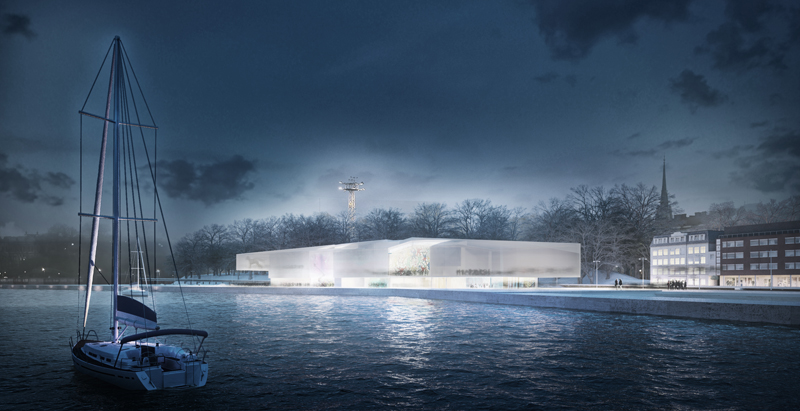
From the architects:
The use of Street Space forms the basis for basic social discourse, from political gatherings to Art creation or community expressions.
While an increasing “unofficial” art was blooming in the streets from the second half of the XX Century, Museums have been historically focused in Gallery Art, excluding Public Space production.
Future is “bottom up”. Museums have to change from institutions where information was directed in only one way: towards the viewer into institutions that are increasingly creating conversations with the citizen, prioritizing the human scale of a space over its merely sculptural value.
Due to its particular climatic conditions. There are 2 cities in Helsinki. Summer Helsinki and Winter Helsinki. We propose a Strategy that could offer back to the City an Interior Street, Public Space at no additional cost to be used also the 6 cold months of the year. The combination of 2 programs -The Museum -Gallery Art- and The Extra Space -Street Art- in a single building allows us to explore the relationship between 2 complementary worlds. Using both factors, we had the chance to add, subtract, divide… We decided to multiply.
FINALIST #3

From the architects:
Helsinki is a city of interiors. Due to its extreme climatic conditions, Helsinki’s civic society blossoms indoors. Our proposal for the Guggenheim Helsinki, 47 Rooms, extends this network using the architectural technologies that construct Helsinki’s interior citizenry: i.e. walls, doors, windows, and the machinery that defines atmospheric conditions.
47 Rooms contains nine rooms of 20x20m, twenty-seven of 6.5x6.5m six of 10x10m, two of 120x4m and one of 32x120m and three outdoor rooms. A multiplicity of chambers and climatic conditions will allow various museums to live together in the same building. The museum is ready to welcome individual visitors, families, local art scene, high school visits, young audiences, international tourists, groups of friends… 47 Rooms is a machine to provide singular and ever-changing experiences by opening and closing doors to different climates.
47 Rooms extends the logic through which Helsinki’s population already tempers their more intimate public spaces. Imitating the logic of the Sauna, each room’s final climatic conditions include certain degree of negotiation between the institution and its visitors.
47 Rooms means a strategic shift on Guggenheim’s identity: it embraces Helsinki focusing on interior climate rather than external appearance.
FINALIST #4

From the architects:
Our proposal takes the form of a Helsinki city block rotated to the harbourfront.
Seven timber-clad galleries are stacked over a basement and three levels flanked by administration and open-format halls. Public spaces are formed between these and an intelligent textured glass skin wrapping the entirety to precisely diffuse light, translucent below, and transparent above. The lower galleries join as needed, while the third floor is one super-space. The variety enables a wide range of curatorial approaches.
The museum’s three entrances are arrived at by new cobble and gravel walking routes. Centrally a wide, convivial staircase helps visitors wayfind intuitively. “Art Kioski” annex for young Nordic art twins the historic Kauppahalli while a sculpture garden is enclosed to the south.
In 1800s Helsinki city blocks were named after wild animals. The proposed new block will have the tactile familiarity of a pet’s fur. So we call this proposal “quiet animal."
FINALIST #5
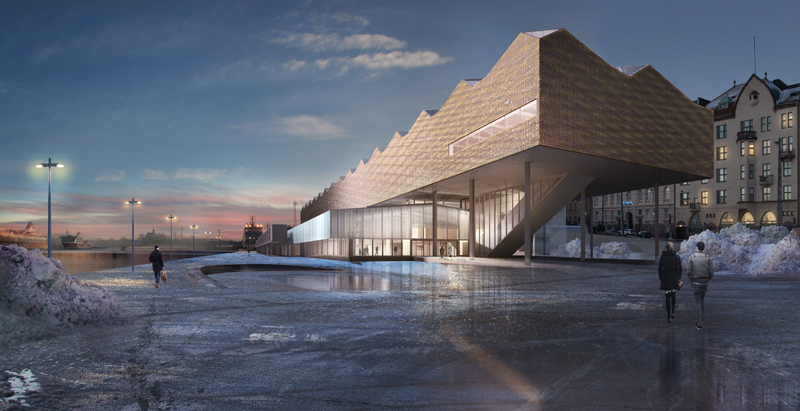
From the architects:
The museum is composed of two spaces - one for exhibitions, the other a public forum - that come together in a dance involving art and the city, gradually engaging in multiple movements, from a pas de deux, to a pas de trois, etcetera.
One space of the museum is on the dock level of the port facility, acknowledging the site’s industrial function as a vital memory for the new ensemble. Part gathering place, part community center, part incubator for innovation, it is conceived as a social commons within the city.
The other space of the museum houses art exhibitions. Hovering in the air, it offers a place for contemplation, with large open galleries, complementing its companion space below.
Greater than the sum of its parts, the museum generates multiple relations among people, architecture, and the arts. With this, the Guggenheim Helsinki can engage a broad constituency of stakeholders, benefiting not only the arts, but the public at large.
FINALIST #6
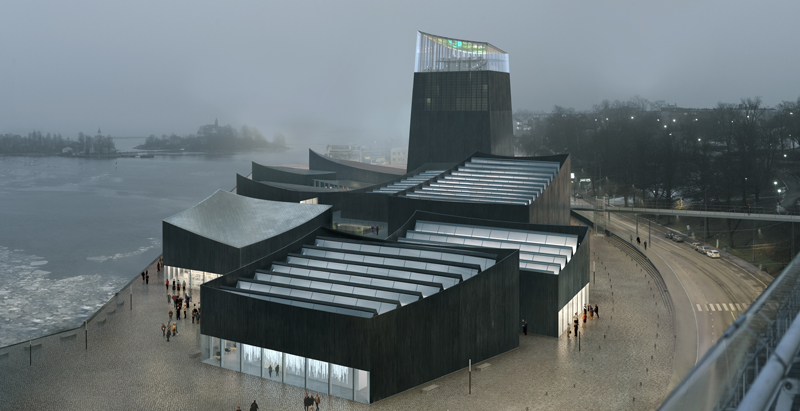
From the architects:
The design of the Guggenheim Helsinki and its woven landscape are based upon a sensitive and sympathetic approach to the context and nature of Helsinki. The design encourages people to flow within a new cultural core that is linked to the rest of the city, through the port promenade and the pedestrian footbridge to the Observatory Park. This flexible access welcomes not only the visitors but also serves as a key cultural destination for the community.
The museum skyline is composed by independent volumes, highlighted by a landmark tower. These fragmented art exhibition spaces allow strong integration with outdoor display and events, while the lighthouse offers a new perspective over the city. This new museum concept together with the charred timber façade echoes the process of regeneration that occurs when forests burn and then grow back stronger.
Related Stories
AEC Tech Innovation | Sep 18, 2020
New Innovation Center should heighten Port San Antonio’s tech profile
The facility will include a 2,500-seat arena and serve as new home for the city’s S&T museum.
Giants 400 | Aug 28, 2020
2020 Giants 400 Report: Ranking the nation's largest architecture, engineering, and construction firms
The 2020 Giants 400 Report features more than 130 rankings across 25 building sectors and specialty categories.
Museums | Jun 12, 2020
How will museums change after COVID-19
This new environment may herald innovative economic models and change the way we think about museum design.
Museums | Jan 14, 2020
St. Louis’ new aquarium is built inside an 19th century train shed
PGAV Destinations designed the project.
Museums | Jan 8, 2020
The Grand Canal Museum will tell the story of the world’s longest canal
Herzog & de Meuron designed the project.
Museums | Dec 18, 2019
Weiss/Manfredi will lead the master plan of the La Brea Tar Pits
The firm was selected by The Natural History Museums of Los Angeles County after an international competition.
Giants 400 | Oct 3, 2019
Top 65 Cultural Sector Construction Firms for 2019
Whiting-Turner, Turner, PCL, Clark Group, and Gilbane top the rankings of the nation's largest cultural facility sector contractors and construction management firms, as reported in Building Design+Construction's 2019 Giants 300 Report.
Giants 400 | Oct 3, 2019
Top 70 Cultural Sector Engineering Firms for 2019
Jacobs, Arup, EXP, BRPH, and Thornton Tomasetti head the rankings of the nation's largest cultural facility sector engineering and engineering architecture (EA) firms, as reported in Building Design+Construction's 2019 Giants 300 Report.
Giants 400 | Oct 3, 2019
Top 110 Cultural Sector Architecture Firms for 2019
Gensler, Populous, DLR Group, Stantec, and Perkins and Will top the rankings of the nation's largest cultural facility sector architecture and architecture engineering (AE) firms, as reported in Building Design+Construction's 2019 Giants 300 Report.
Giants 400 | Oct 3, 2019
2019 Cultural Facility Giants Report: New libraries are all about community
The future of libraries is less about being quiet and more about hands-on learning and face-to-face interactions. This and more cultural sector trends from BD+C's 2019 Giants 300 Report.


